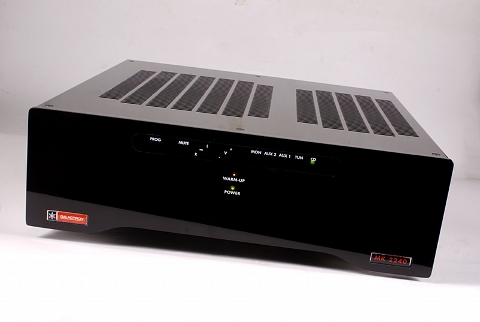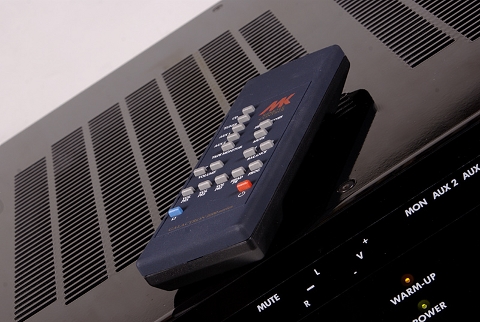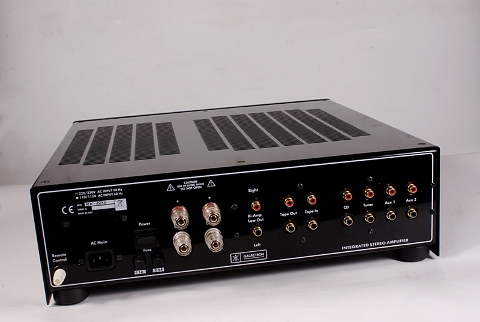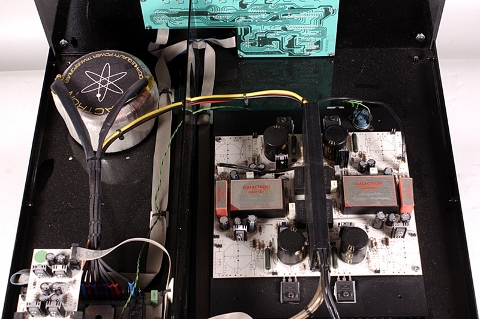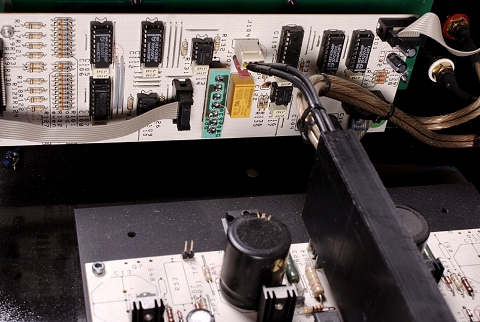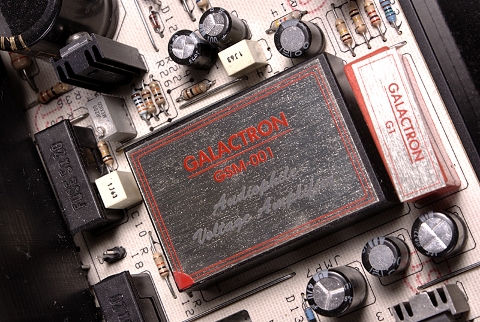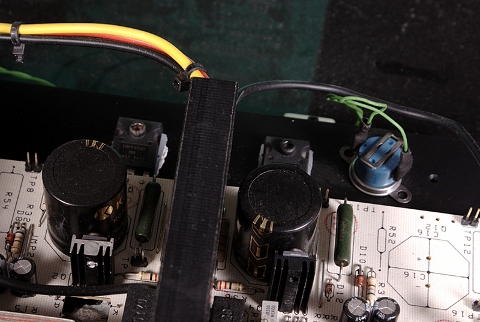about Audio, High Fidelity
& Home Entertainment technologies
pid: 607-2025/10/01 (v1.2)
Privacy Policy
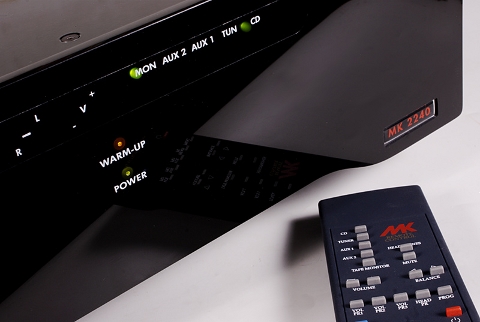
I never cease to be amazed by the natural talent inherent in Italian industrial design and their ways to diversify even the simplest structure. Take for example the MK 2240. Without any switches, rotary controls or sliders on its front panel, without a visible external heat sink, and with an all-black glossy finish it is a good basis for an aesthetic disaster… Just imagine a hefty, featureless black chassis with a width of 45 cm in the middle of your rack. Yet, with just three recesses in the front and the sides, the housing of the MK 2240 is easily alleviated aesthetically and appears as a pleasant and diversified product from the rest of the pile. The contrast between the logos, in red color, and the black finish, complements the whole picture by proving that most things around us only need some attention to be more pleasant in the eye. In any case, of course, just a cleverly designed enclosure is not sufficient for an integrated amplifier as there are other important things to consider.
Chassis design and aesthetics are quite elegant, despite the rather simple front panel facade and the absence of any switches and knobs.
The simplicity of the facade, somewhat excessive in my opinion for reasons analyzed below, hides some of the functions offered by MK2240. The user has five line inputs at his disposal, a recording output and a line-level preamplifier output for driving an external power amplifier or active subwoofer. The later requires the installation of a low pass filter module inside the amplifier. The electronically controlled signal routing used in MK 2240 offers real tape monitoring. This allows the user to listen to the signal recorded to tape if a suitable machine is connected (either a three-headed analog tape deck or a monitor capable digital tape recorder), a feature not often included nowadays that recorders are a rarity. Nevertheless, a tape monitor loop offers some additional connectivity for an external signal processor (such as a digital room acoustics correction system) which surely is a good thing. Loudspeaker cable connection is done through two pairs of good quality binding posts that accept large gauge conductors terminated with all the usual methods.
Operation of the amplifier is possible solely through the remote control, an approach with which personally I disagree, since the user has no direct control when the remote runs out of batteries, has been misplaced or broken. Additionally, there is no visual cue for the volume setting. On the other hand the remote offers a positive feeling during its use and the option to store three level settings (as well as a mute button too) which make the user's life easier.
Galactron gives great importance to the correct temperature of the amplifier, hence the "Warm -Up" indicator which informs about the thermal status of the output stage. LED indicators for both level and balance adjustment are only lit during the setting time.
The remote is quite user-friendly and features, among other functions, a mute switch and memory storage for three different level settings.
A look inside the MK2240 reveals a simple but interesting design. Preamplifier stages are based on OPA2604 op amps and input selection is realized through electronic switching. Level setting is also electronically adjustable through a circuit custom-designed by Galactron and not through an off the shelf solution such as the PGA family of volume controllers. The power amplifier is based on a sealed module from Galactron (GSM-001) per channel for the voltage gain stage, a part of the circuit for which the company does not give any details.
The back panel includes five line level inputs, a recording output (capable for three-head machine monitoring), a bi-amp output and good quality binding posts to connect the loudspeakers.
Inside the chassis, one can easily spot the main transformer (at the left side) and the power amplifier board. The heat sink is located at the bottom of the enclosure.
Power stage uses a pair of complementary MOSFETs from International Rectifier (IRFP2240/IRFP9240) biased for AB class of operation. Based on IR's typical specs, each one of these devices is capable of up to 20A current. These components are an interesting choice. The IR Hexfet technology was originally developed for manufacturing high quality (i.e very fast) semiconductor switches and not for linear applications such as those required in the audio industry. However, with a proper driver topology, it is possible to design high-quality power stages using these semis. First trial designs (some ten years ago) quickly followed by more popular projects. Finally, the publication of an application note from IR, offering solutions to all the difficult aspects of an audio amplifier design, officially put the components in the mainstream. You can read a related analysis here and the application note from the International Rectifier here, if you care about some interesting details.
Power supply for the whole amplifier is based on a toroidal transformer and features separate local regulators for both the preamplifier stage and the control circuitry. Power stage circuit boards include two 4.700uF capacitors (per channel).
This is the preamp stage. Input selection and level setting are electronically controlled. Part of the preamplifier circuit is implemented through Burr-Brown op-amps.
Galactron's GSM-001 module functions as the basic voltage amplifier stage for the power amplifier circuit. The company does not give any details of what is under the protective cover.
Power stage is designed around a pair of IR HEXFETs (a MOSFET technology initially developed for high-speed switching applications). The photo also shows two of the power supply filter capacitors and the temperature sensor (to the right, located at the heat sink).

